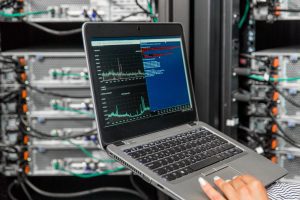I really enjoy war movies, and if you’ve been around me at all, you’ve probably heard me quote lines from some of them. No surprise then that a quote by General Creighton Abrams came to mind as I was working on today’s blog:
“When eating an elephant, take one bite at a time.”
For the purposes of today’s post, the EU Directive for Energy Efficiency (EED) is the elephant. Its scope is massive and its detail is complex. With 2020 on the horizon, public and private entities all across the EU are trying to figure out how to take the first bite toward compliance.
As a brief reminder, the EED is follow-up legislation to the EU’s climate and energy package (EEP). It is designed to drive measurable change across the energy spectrum – from production to consumption to tracking and analysis. If successful, the EED will bridge the gap between existing framework directives and national energy efficiency measures to help the EU achieve its 20% by 2020 reduction target. The goal: to use <1,483 Million Tonnes of Oil Equivalent (Mtoe) in primary energy. This represents a 20% reduction of 368 Mtoe across the EU, or roughly the annual Mtoe of Spain and the United Kingdom combined!
Since the directive is now legally binding, any new measures will impact each country as member states continue to adopt their own efficiency action plans. But, with 28 member states in the EU and 28 Articles in the EED, things get pretty complicated especially for any organization whose footprint crosses country borders.
Given that reality, let me confine my thoughts on the EED to only Article 8 (and only two obligations within Article 8) for now, which require Member States to comply with the following:
a) Promote the availability of high quality and cost-effective energy audits to all final customers, …[to be] carried out by qualified and/or accredited experts or supervised by independent authorities;
b) Ensure mandatory and regular audits for large enterprises…[to be] carried out by qualified and/or accredited experts or supervised by independent authorities;
Because the EED defines a “large enterprise” as having €50M in turnover or >250 employees, Obligation B alone sets up 50,000 companies in Europe – yes, 50,000! –with a very tall task: comply with the disparate schemes that apply to each of your sites by country. But again, that’s the whole elephant. To understand the best path forward, let’s take it one bite at a time.
First bite: Understand the impact of the EED on your enterprise
Obviously, the more countries where you have sites, the more compliance schemes you have to comply with. So, the key is beginning with a country-specific analysis that includes each country’s strategy, legislative framework and the legislative instruments in play. Ideally, this analysis would cover four primary areas:
- Legislative risks
- Incentive opportunities
- Tax exemptions and cost
- Scenario planning
This analysis should help companies identify gaps in their present strategy, then minimize risks and maximize opportunity moving forward.
Second bite: Identify opportunities to increase efficiency
Simple facility walk-throughs or more comprehensive audits and workshops at each site can help uncover efficiency opportunities. Common efficiency projects may include redesigns, upgrades, and/or commissioning of mechanical, HVAC systems, and lighting systems. Most importantly, efficiency engagements should come with specific recommendations based on project cost and expected ROI to inform your prioritization.
Third bite: Improve visibility to your organization’s progress
Use a data platform/software to house project details and make tracking actual vs. projected ROI easier. This will likely include implementing an Energy Management System to collect electricity, gas and water consumption data from meters at your sites. Software-as-a-Service (SaaS) options are available, but a managed approach (SaaMS) to help address data integrity/quality challenges may be the wiser investment in this case.
Fourth bite: Pursue best practices over time
In this case, you can navigate this process every 4 years, or move forward now with ISO 50001 certification, which exempts your organization from the process going forward. This level of certification helps lay the foundation for your energy and sustainability management system leading up to and well beyond 2020. Best of all, ISO 50001 is easily scalable to help your company meet future regulations and certifications, including the specific member state implementations, following the 30th June assessment.
Clearly, the EED is very ambitious, very complex and very likely to evolve in the coming months and years. But, with the right perspective, compliance can bring a number of benefits:
- Clear resource optimization strategies
- Tangible opportunities to increase efficiency
- Greater visibility into your progress
- Best practices in place for the future
You’ve got a big meal ahead of you, but it’s time to get started. If you’re feeling overwhelmed, we’d be happy to stop by for dinner. We’ll not only bring our own utensils, we’ll also bring people to serve the meal.
***************
To attend a free, 50-minute Masterclass on the Energy Efficiency Directive led by one of our experts, register here.
***************
Leave a comment below or click here for more information. Read my previous posts here.



